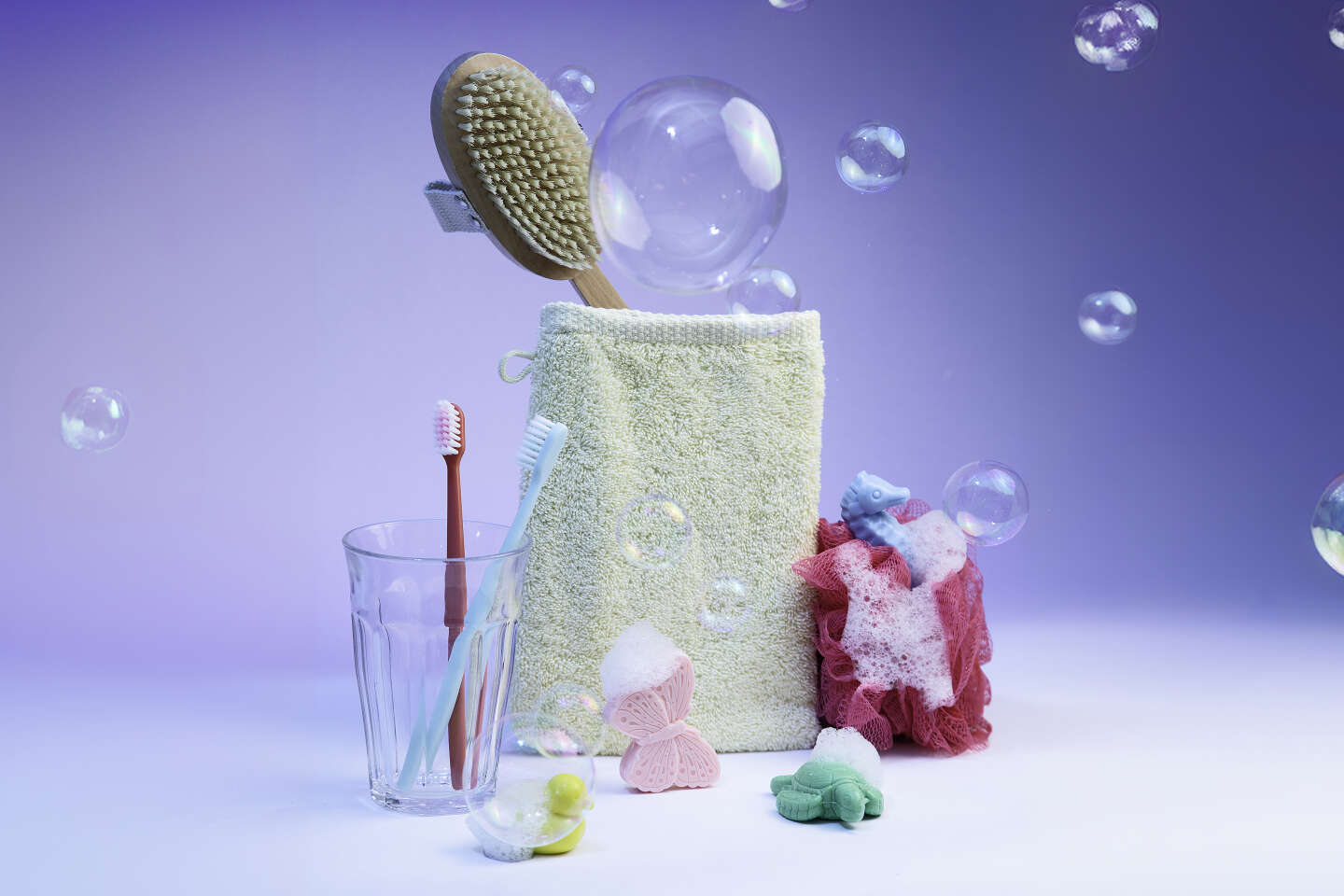In recent years our bathrooms have been affected by a strange phenomenon: towels no longer hang next to the sinks. Most often, they are mummified in the back of a closet, where they have every chance to fall into oblivion, except for those rare moments when they are dug up to be placed, wet, on the forehead of a feverish child. “When I provide my guests with a bathtub, the washcloth always comes back dry”notes Anne, 51. “My mother gave me her collection monogrammed with the family’s initials, but I don’t know what to do with it”, admits Sylvie, 60 years old. When he goes to his grandmother’s house, 16-year-old Lucas finds the object “funny” but didn’t really adopt it. We are now more likely to find a sponge in our shower cubicles to descale the tiled walls than a good old washcloth.
Needless to say, this cotton bag measuring fifteen by twenty centimeters, passed through everyone’s bottom in the house, is not very attractive. “The worst are the dark colored models to hide the dirtjudge Claire, 52, who admits to being a child addicted to washcloths (four per shower session). The towel does not have the same effect because we use it when we are clean. » Not to mention it smells very musty. “The washcloth traps dead cells and bacteria that rot due to moisture, which promotes bad odors.explains Marie Jourdan, dermatologist. When I was still washing myself like this, I found a little trick. When cleaning the glove, I ran the water through the inside and not the outside so that it would remove all that broth. »
The disgust aroused by the matter undoubtedly explains the lack of interest shown by historians. While we find specialists experienced in almost all cleanliness tools – the towel, the bidet, the shower, etc. –, no one was interested in the washcloth (even AI today has difficulty generating images of washcloths). In The Pure and the Impure. Body hygiene since the Middle Ages (Seuil, 1985), which recounts the slow refinement of hygiene, the historian Georges Vigarello does not mention it. Throughout the pages, we still guess that the washcloth finds its origin in the square of white linen with which the courtier of the 17th century.e a century rubbed his face, except that it had no intention of getting wet. After the plague epidemic, water was blamed for all diseases (vision problems, catarrh, paleness and weakness of the face, etc.), which explains why the ancestor of the washcloth dried.

